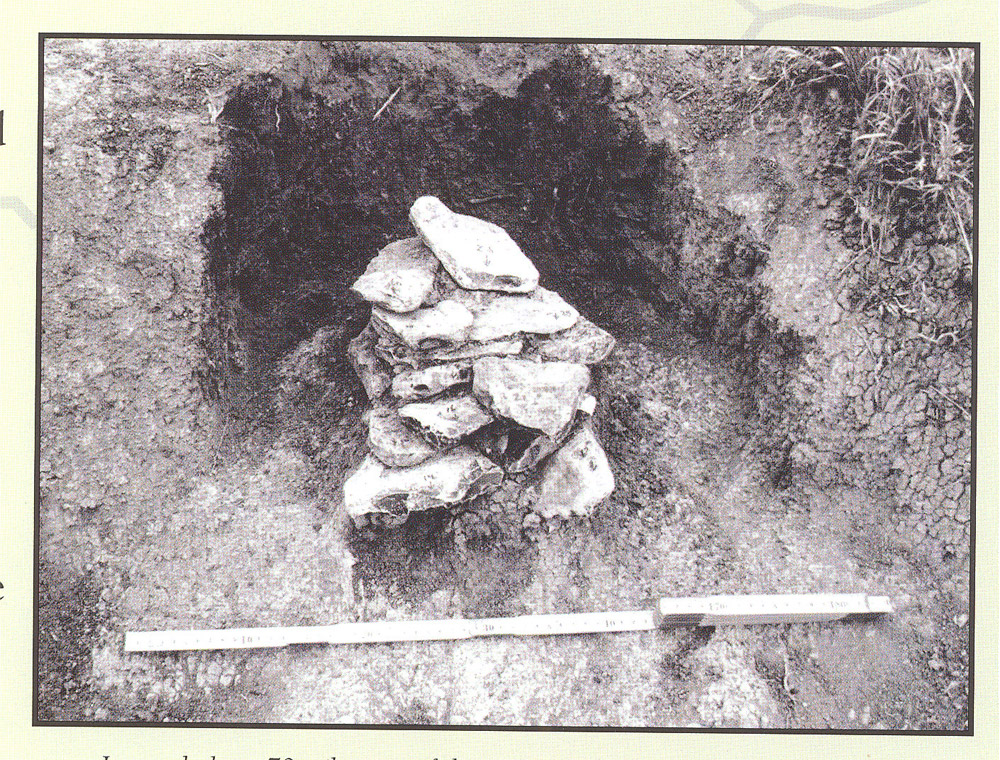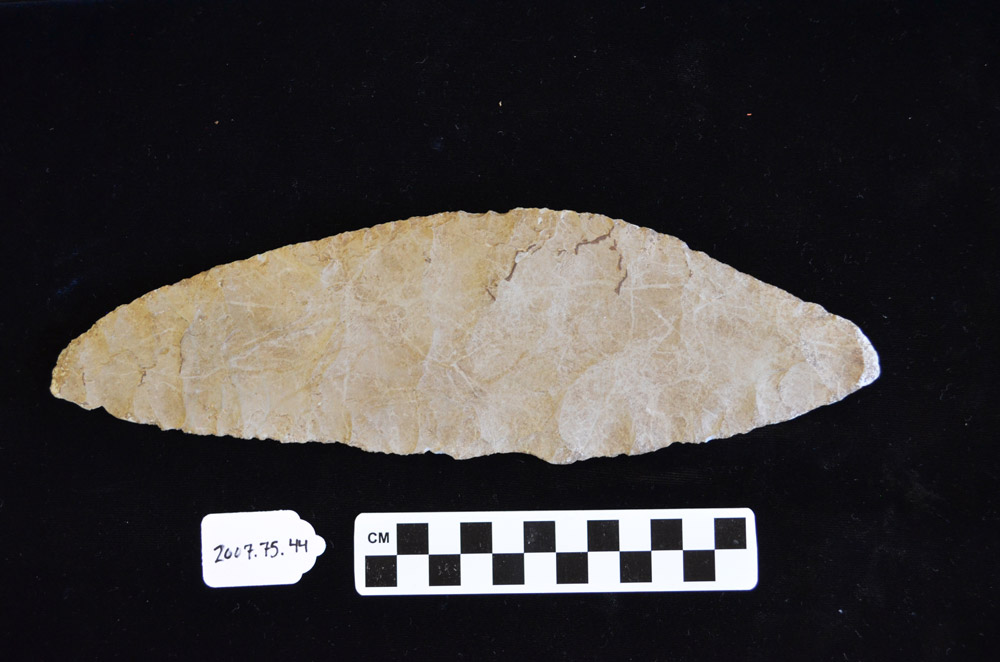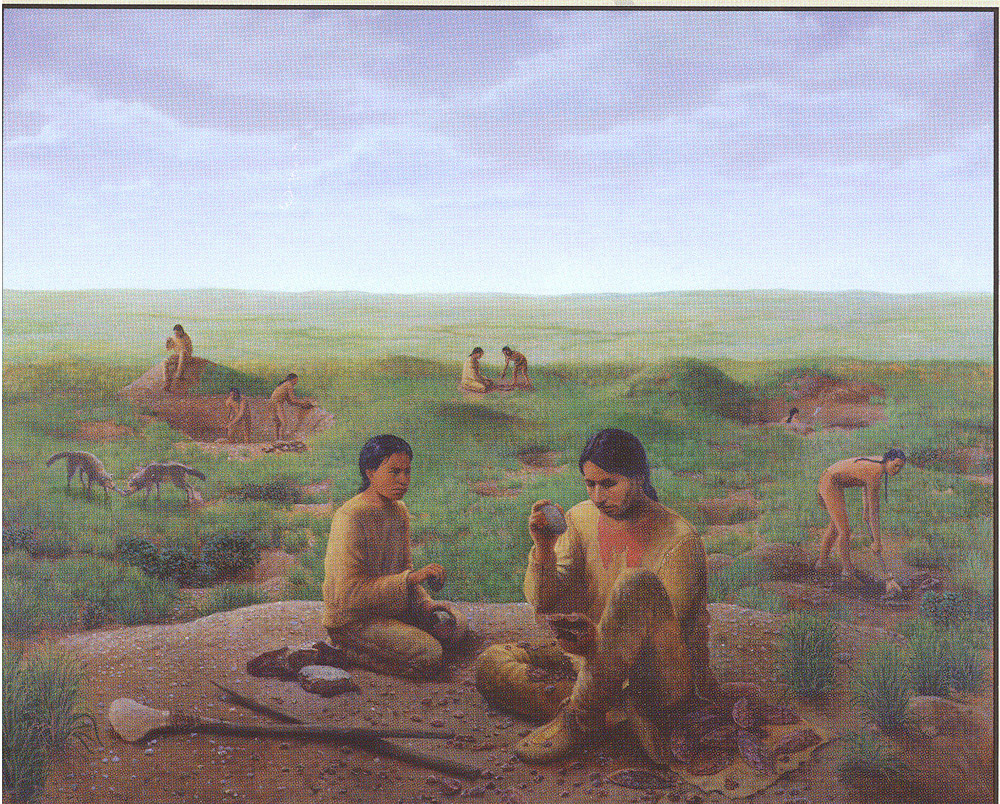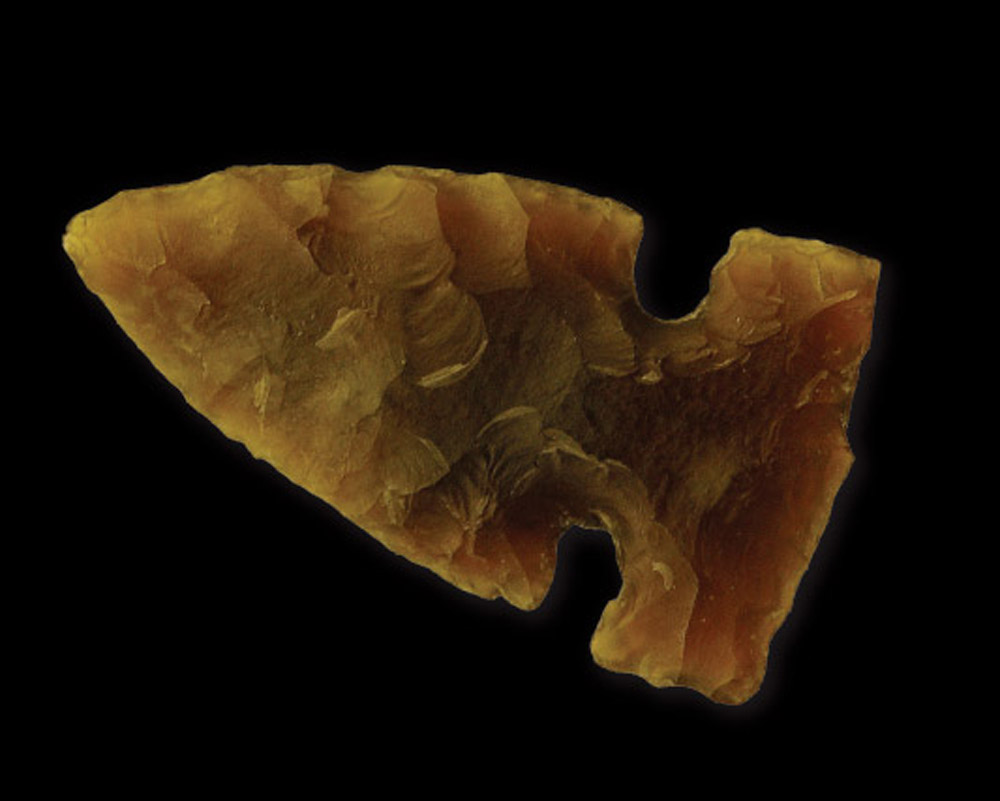Archaeologists believe that the first People in North America came from Asia across a land bridge called Beringia. They might have arrived 20,000 years ago or more. However, the first People in North Dakota (that we know of) were the People who made Clovis points. People of the Clovis culture left some tools near present-day Beach about 13,500 years ago.









Archaeologists classify ancient People according to the tools they made and used. TheClovisArchaeologists often speak of the “Clovis culture” or “Clovis People,” but there is really no evidence that the People who hunted with the Clovis points actually shared a culture other than making a specific style of stone point. We don’t know if they spoke the same language, lived in the same kind of houses, or shared a religious view. We only know that they made the same type of tools. are known for making a certain style of large, fluted stone point. Points were attached to a wooden spear to use as a weapon. Clovis points were beautifully designed to have sharp edges and a sharp point. The maker chipped an indentation, called a flute, at one end of the point so it would fit snugly into a spear or dart shaft made of wood or bone. (See Image 4.) The stick was split at one end, and some pine resin was applied to the stone. The tool-maker would then press the dull end of the stone projectile point (the sharp tip of a weapon) where the flute had been chipped out into the split wood and wrap the wood tightly over the stone piece using a piece of sinew (a small piece of animal tendon).
Points were made from smooth stones such as flint, chert, or obsidian. The People would chip these stones into the proper shape using stones, bones, or antlers as the chipping tools. This process is called knapping.
Clovis points have been found all over North America. Some points are about the size of a man’s hand; others are as large as a man’s forearm. These large points made it possible for the People to hunt the great beasts of the Pleistocene. Some points have been found near the fossilized bones of mammoths indicating that the People hunted these huge beasts for food. These stone points are the only evidence we have of the Clovis culture. We don’t know if all the people who used Clovis points shared cultural qualities or if they borrowed the technology from one another. Caution!Caution! It is not a good idea to go searching for ancient artifacts. Federal and state laws protect ancient objects from theft. If you happen to find an interesting stone point, contact the State Historical Society of North Dakota for advice.
The Clovis culture lasted a little more than 500 years. Some scientists believe that when the large animals of the Pleistocene died out (no one knows exactly why) at the end of the Ice Age, about 10,000 years ago, the People adapted to hunting smaller animals. They made smaller points with a slightly different shape. These are called Folsom points.It may seem that all of the People came from New Mexico where the towns of Clovis and Folsom are located. That is not quite true. Actually, both Clovis and Folsom People lived in the area around the modern towns of Clovis and Folsom, New Mexico and left pieces of their points there. Clovis and Folsom points were first discovered near those towns and the points were named for the towns (a common practice). In reality, Clovis and Folsom People lived over almost all of North America.
Folsom points are usually smaller than a man’s hand. They have a longer flute (shallow indentation) than the Clovis point. (See Image 5.) The flute runs almost the entire length of the point. The unpointed end tends to be a bit narrower than the rest of the point. It is hafted (attached) to the wooden rod in much the same way as the Clovis point. Around 8,000 years ago, People began to make different kinds of points. Few People made the Folsom type of point; it was replaced by other styles and those were, in time, replaced, too.
One of the favored stones for making points was Knife River Flint. (See Image 6.) This smooth, hard stone is found in many places, but there is a large deposit of Knife River Flint in Dunn County. (See Image 7.) The stone was quarried in good sized pieces. (See Image 8.) Then, knappers broke down the large chunks into “blanks,” or workable pieces that were then knapped into points, knives, or scraping tools. (See Image 9.) Knife River Flint was not the only type of stone used in making points, but it was one of the most desirable materials and was used for thousands of years in making different kinds of projectile points. (See Image 10.)
Ancient hunters propelled small spears with the help of an atlatl (at-LAT-ul). The atlatl, or spear thrower, was a small stick with a small notch at one end. The hunter would set the end of his spear or dart into the notch and then propel the spear toward the target. The atlatl added distance and power to the spear. (See Image 11.)
The People of the Clovis and Folsom cultures also made knives, scrapers, and other sharp-edged tools using similar techniques. The People also made tools of bone and antler. (See Image 12.) Some bone tools were used for digging. (See Image 13.) Other bone tools, called awls, were used to puncture holes in leather. (See Image 14.) People used stones to grind seeds and roots into digestible foods. One stone was held in the palm of the hand to grind against a larger stone that had an indentation to hold the seeds.
Around 600 A.D., North American Indians began to make and use bow-and-arrow tools. This was a great technological advance over the spear. The tension of the bow caused arrows to travel much faster, farther, and with greater accuracy than spears. Arrowheads were smaller than spear points, so a flintknapper could make many more arrow points than spear points out of a piece of flint. (See Image 15.) A hunter could carry one bow and many arrows. Hunters were more efficient and accurate with a bow and arrow than with a spear.



Why is this important? Points and other tools tell us that the early people of North Dakota were meat eaters who hunted the great beasts of the plains. It is likely that they also gathered plants, including roots and fruits, to add to their meat diet. The cutting and scraping tools made from flint and other smooth stones were useful in processing game and in preparing plant foods. In addition, the earliest people had to defend themselves from predatory animals with the same weapons they used for hunting. Because they were able to shape stone and bone into tools, they were able to take advantage of the food sources the environment offered them.
We can assume that men taught tool technology to their sons and shared their technology with other People as they traveled. However, there came a time when People decided that the old technology did not work anymore. They designed new points and other technologies to suit the changing world they lived in.


